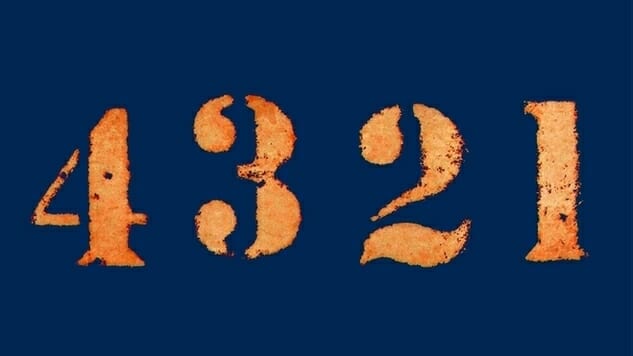One Man, Four Alternate Histories: Paul Auster’s New Novel 4 3 2 1 Proves He’s a Master of Metafiction

Paul Auster’s best work often reads like metafiction for the metafiction-averse, compelling the reader to confront the illusive nature of fictive storytelling. Yet the effect is rarely as alienating as with other meta-novelists, due to Auster’s allegiance to straightforward storytelling—a predisposition that often leaves him out of the “meta” conversation altogether.
As Auster explained in a 2005 interview, “We know when we open up a book of fiction that we’re reading something that is imaginary, and I’ve always been interested in exploiting that fact, using it, making it part of the work itself.” Auster’s books operate at cross-purposes: carrying us away in the thrilling machinations of his characterization and plotting, while repeatedly shaking loose a story’s grip by deconstructing the machinery of writing or the voyeurism of reading. The fact that he’s managed to accomplish these two opposed tasks through conventional narrative structure underscores his signature gifts. Auster’s stories about stories are such ripping good yarns that watching him unravel them (and knowing the unraveling is coming) adds to the fun, rather than spoiling it.
Auster’s career as a successful novelist now spans four decades. But roughly 20 years and 11 novels after he first found his audience with the acclaimed trio of novellas, The New York Trilogy (1987), Auster confided to an interviewer that he felt like he was running out of ideas. Specifically, he explained that he was having more difficulty coming up with stories rather than ideas. His most recent book at that point, Man in the Dark—longer on ideas than story and dispiritingly flaccid in its uninspired narrative resets—seemed to illustrate the point.
Auster hadn’t lost interest in writing, but rather he’d lost interest in writing stories that lacked urgency for him. He followed up Man in the Dark with the richly layered Invisible, which felt every bit as urgent as the tense Leviathan, the haunting Music of Chance and the best of his earlier work. Each of Invisible’s four interlocking segments, in its own way, throws into sharp relief the peculiar projects that are autobiographical novels.
 4 3 2 1, Auster’s magnificent new novel, is reminiscent of Invisible in that it deals with the impossibility of containing a life in a single story. 4 3 2 1 also divides into four parts, but these parts are presented in parallel, rather than in sequence. Each of the narratives recounts four alternate histories of a single character, Archie Ferguson, born in a Newark Hospital in 1947.
4 3 2 1, Auster’s magnificent new novel, is reminiscent of Invisible in that it deals with the impossibility of containing a life in a single story. 4 3 2 1 also divides into four parts, but these parts are presented in parallel, rather than in sequence. Each of the narratives recounts four alternate histories of a single character, Archie Ferguson, born in a Newark Hospital in 1947.
Auster kicks off the book with a “family legend” that unfolds more like a Borscht Belt shaggy dog story: A Russian Jew named Reznikoff arrives at Ellis Island and finds himself unable to remember the American name that a fellow Russian Jew recommended he give to the immigration officer (Rockefeller). Rattled, he stammers out “Ikh hob fargessen,” a Yiddish phrase for “I have forgotten.” It sounds enough like “Ichabod Ferguson” that Reznikoff begins his new life as an American Jew saddled with that absurd name. Thus, the decidedly unkilted Ferguson clan of New York and New Jersey Jews is born, and 4 3 2 1’s overarching vision of fluid identity is introduced.
We briefly read of Ichabod and his wife, their son Stanley’s protracted courtship of the vivacious Rose, and the eventual birth of Stanley and Rose’s son Archie in 1947. Following Archie’s birth, we find ourselves in Chapter 2.1, enjoying the engaging story of Archie’s baseball-filled childhood in New Jersey until a burglary at the appliance store Stanley runs with his two brothers destabilizes the family in 1959. Chapter 2.2 begins not in 1959 but in 1953, with a demonstrably different six-year-old Archie—sickly and accident-prone in another New Jersey town—and a slightly different life-changing event involving the store in 1959. So it is with Chapters 2.3 and 2.4—same starting point, same parents, same genetic material, same name, different life.
-

-

-

-

-

-

-

-

-

-

-

-

-

-

-

-

-

-

-

-

-

-

-

-

-

-

-

-

-

-

-

-

-

-

-

-

-

-

-

-








































